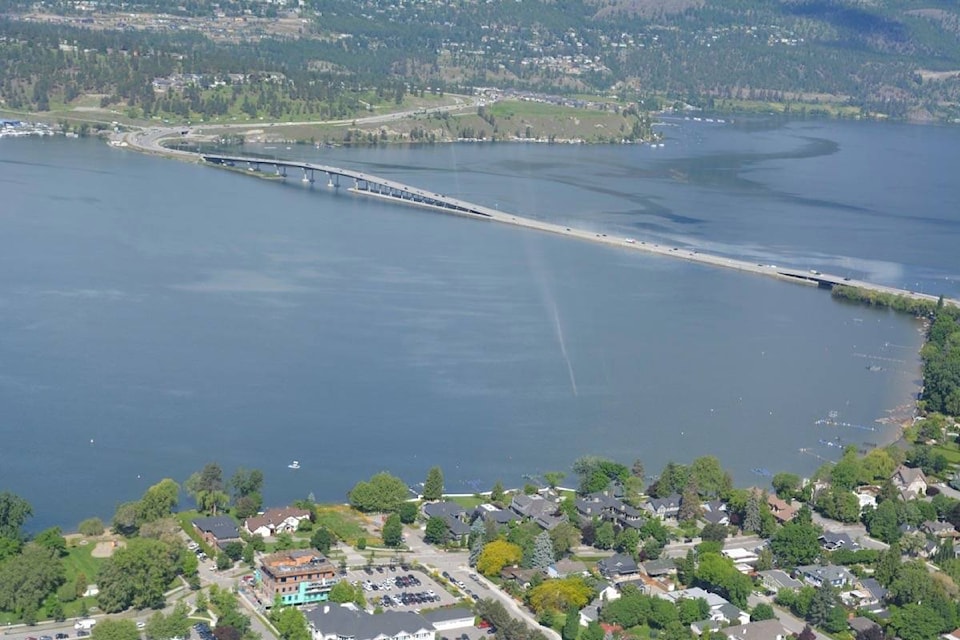Some Okanagan lake levels are starting to go down while others are rising.
As of 5:25 a.m. June 13, Environment and Climate Change Canada reported Okanagan Lake is at 343.237 metres above sea level, a three millimetre decrease from the 343.240 metre level measured yesterday morning.
Kalamalka Lake was recorded at 392.423 metres, up from the 392.409 metre mark yesterday morning. It means that Okanagan Lake is approximately 73 centimetres above full pool (optimal lake level) and Kalamalka is 72 centimetres above full pool.
Conditions appear to be ever-changing and as such the response is also shifting.
“The public may notice flood response crews removing sandbags and other protective measures from areas in the region but are reminded that the flooding event is far from over and all other protective measures should be maintained,” reads the latest press release from the Emergency Operations Centre.
“Crews are repositioning protective measures from locations that are no longer under threat to areas where bolstering is needed as part of ongoing flood response. Locations may include those on public and private properties where emergency crews initially installed flood protection measures to protect public infrastructure.”
During this process crews will be assessing the quality of the sandbags and sand, which will help confirm the course of action that residents can take when the flooding threat has passed in their area. For now, residents should leave all protection measures in place.
The Emergency Operations Centre (EOC) is actively working on a plan for regional recovery which includes timing for when protective measures can be removed.
Even with some promising lake level readings, it may still be several weeks before protective measures can be fully removed. The EOC is tracking a weather system that may bring precipitation and wind which can significantly impact protective measures.
In the coming days, the Emergency Operations Centre will provide information on:
- How to safely remove debris from the foreshore, including docks, garbage and forest debris, and deposit locations.
- When sandbags can be removed and where they can be deposited.
- What the Central Okanagan’s plan is for community recovery.
Lake levels may fluctuate up and down and ground water continue to increase for a period of time. A small lake level drop may not indicate the peak has been reached. Weather will continue to play a role with heavy rain causing lake levels to rise again.
The lake remains at record high levels and property owners should keep their flood defences in place. Check sandbags daily and if needed, repair, replace and bolster them to ensure adequate buffer and protection. Gusty winds will continue to challenge flood protection measures.
People are reminded to stay off flood protection equipment and stay away from standing water. Jumping or walking on gabions or water dams is a public safety concern and could damage or undermine the device causing ruptures and significant water flows.
Emergency Operations Centre personnel are continuing to assess lake levels and the impact any future weather events may have on the ongoing emergency response.
All other Evacuation Orders and Alerts remain. Check out the map at www.cordemergency.ca/map and search by address to determine if an area is under alert or order, or to find the closest sand and sandbag locations.
For more information, visit www.cordemergency.ca, sign up for e-updates or call the information line at 250-469-8490.
